Photo Section

A great white shark smashes through the waters of False Bay in South Africa. Some great whites can jump 10 feet above the surface.
Chris Fallows
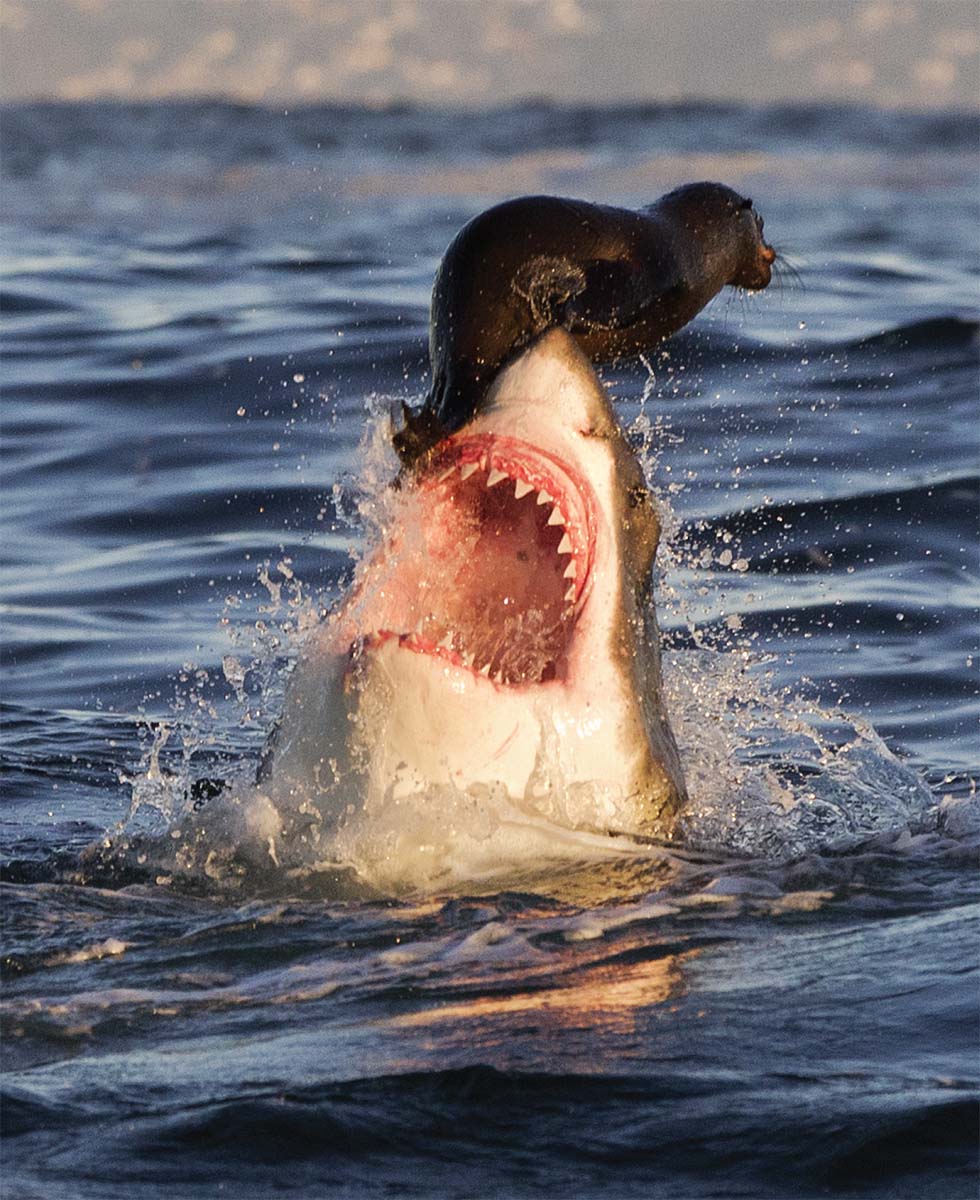
A baby seal, whose life literally hangs in the balance, scrambles to escape the teeth of a great white in False Bay.
Chris Fallows

After Steven Spielberg’s Jaws, local shark tournaments rose in popularity, which resulted in the widespread massacre of sharks. Makos, threshers, and other species were killed—all in the name of sport. Pictured here, circa 1975, is a great white shark.
NOAA

After the tournament, the sharks are cut up and their individual body parts are often sent to landfills. Here, a shark’s still—beating heart sits on the front loader of a tractor in Montauk, New York.
William McKeever

A mako killed in a recent shark tournament in Montauk. Desperate to spit out the fisherman’s hook, the shark vomited out its stomach.
William McKeever
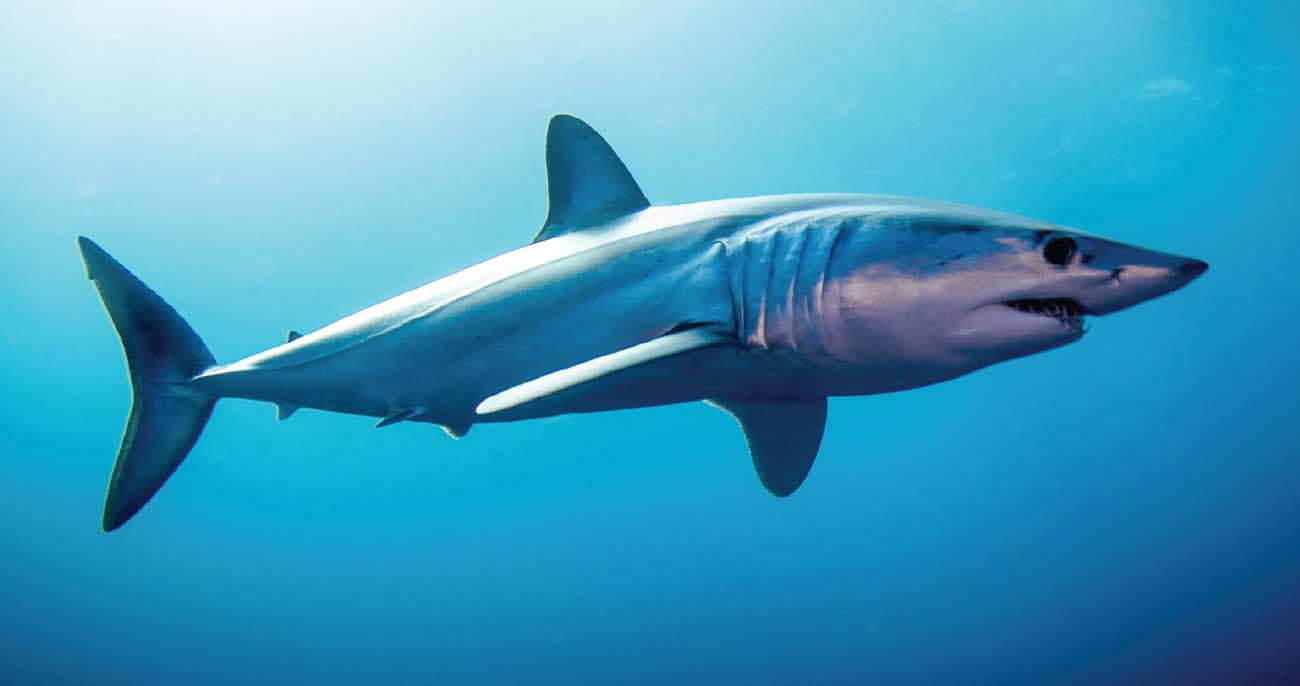
Combined with its intelligence and toughness, a mako’s speed makes it a formidable underwater hunter—though no human has ever been killed by a mako.
Howard Chen/iStock
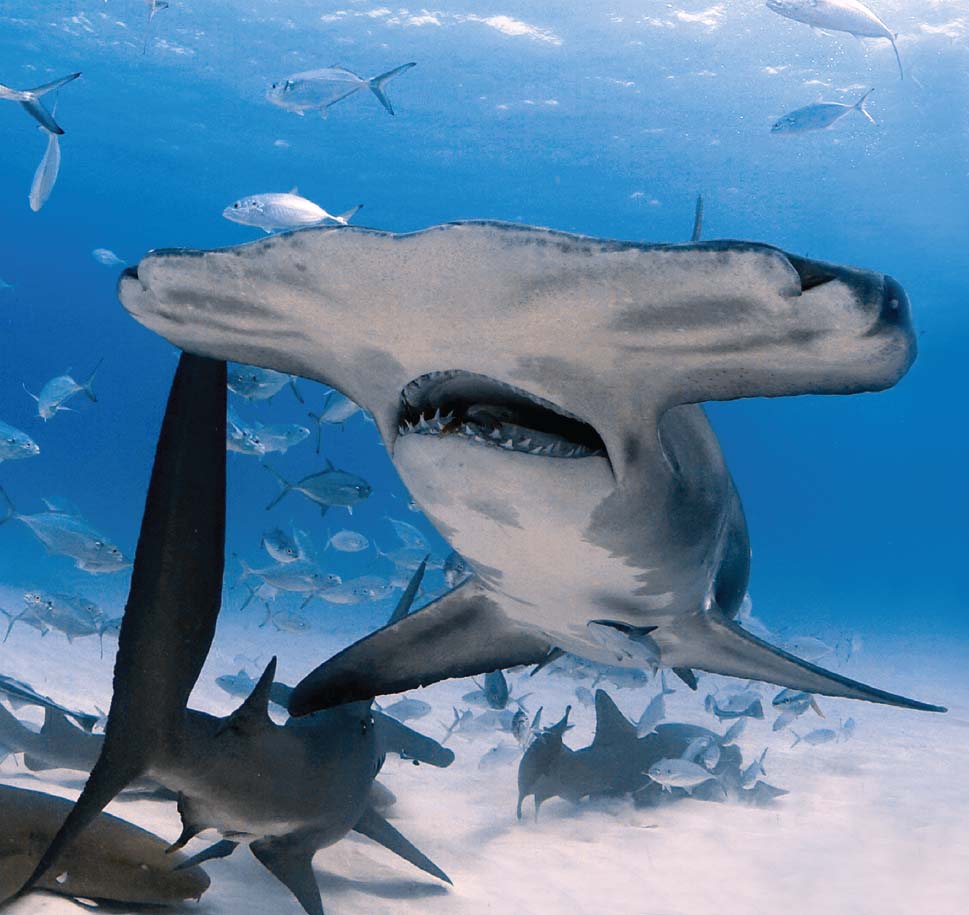
Perched at the extreme ends of its head, a hammerhead’s eyes afford it a 360-degree panoramic view of its environs. In addition to its trademark eyes, the hammerhead’s sensory abilities allow it to detect prey buried in the sand.
Duncan Brake
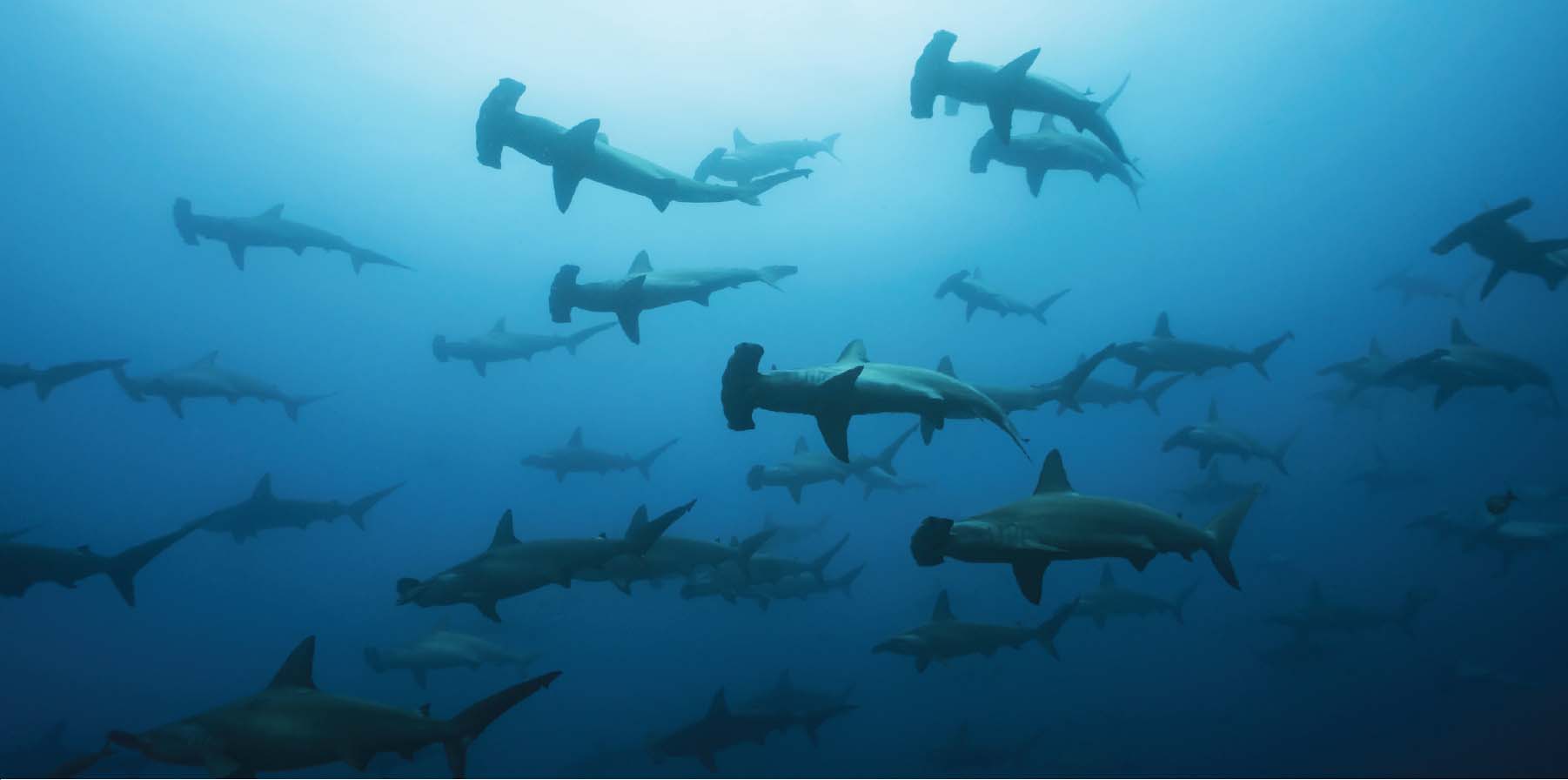
Schooling hammerheads in Costa Rica. Dominant females work their way into the center of the school by pushing away females lower in the hierarchy. Males then fight their way into the center to mate with the top females. Over the past forty years, the hammerhead population has declined by 90 percent in the North Atlantic and Gulf of Mexico.
Janos Rautonen/Shutterstock

The hammerhead’s tall dorsal fin creates tremendous lift, which allows the shark to swim on its side, conserving energy.
Duncan Brake

Two tiger sharks on patrol in the Bahamas. Although the tiger’s stripes fade as the shark ages, the stripes are still visible on both tigers here. Tigers protect areas of seagrass by keeping away turtles and dugongs, which feast on the flowering plants. Tigers also keep the ocean clean by eating man’s discarded junk, including tires, license plates, and other trash.
Duncan Brake

Lemon sharks swimming in the mangroves of Key West, Florida, which serve as nurseries for these sharks before they head out into deep water as adults. Despite the popular misconception of being solitary, lemon sharks are social animals, regularly teaming up with partners for protection, playtime, and lessons on how to hunt.
Duncan Brake

The author speaking with Joe Krone (left), a surfer attacked by a great white, in Mossel Bay, South Africa. The great white took a bite out of his board. Like many people who are attacked by a shark, Krone said he has more respect for sharks as a result of the encounter.
William McKeever
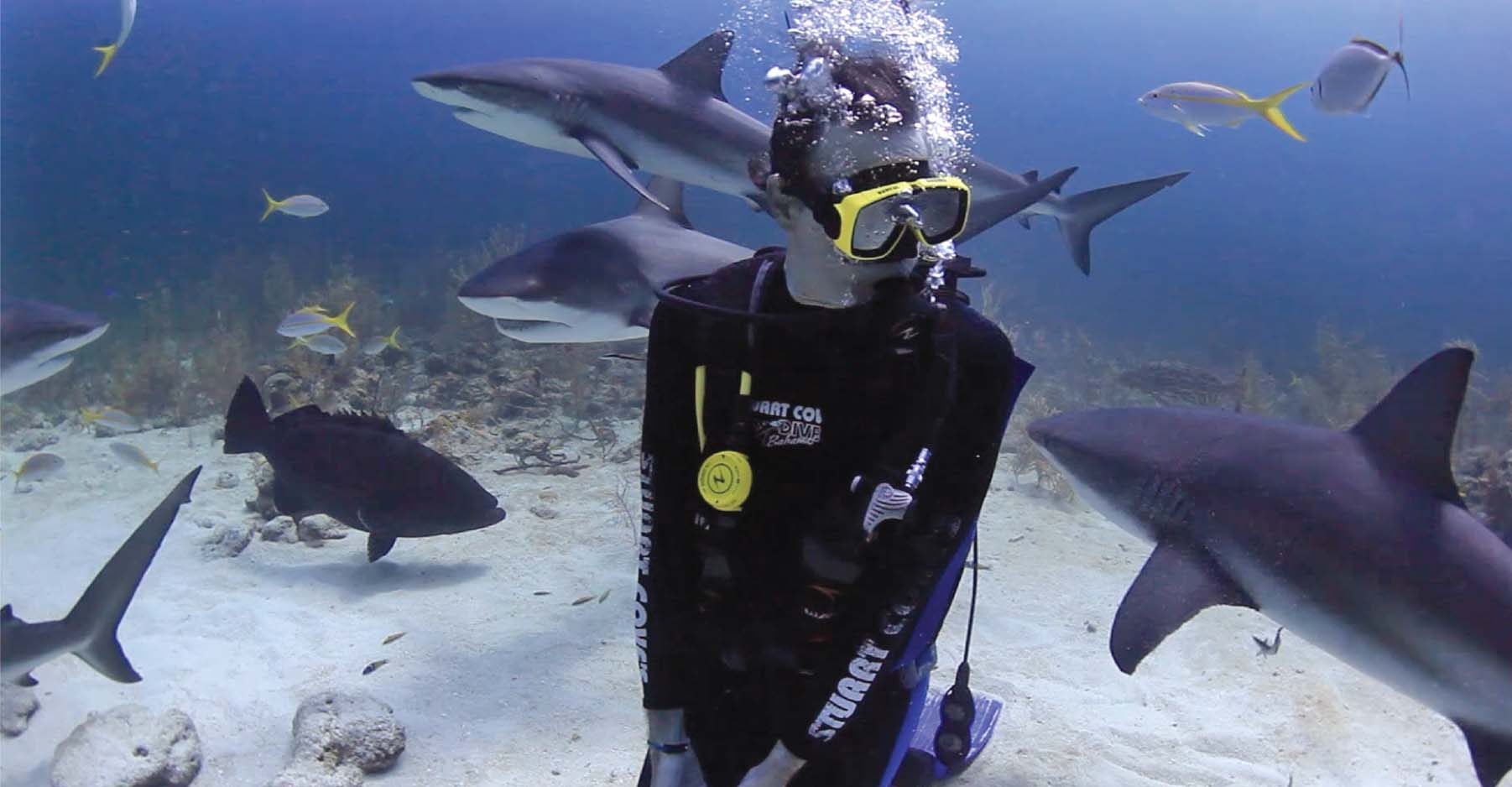
The author diving with Caribbean reef sharks off Grand Bahama Island. These sharks help maintain the vital balance of the ecosystem of the reef. Where sharks are overfished, as they are in parts of the Caribbean, reef habitats suffer.
William McKeever

Inside the office of Mark the Shark, a legendary Miami-based charter boat captain—and self-proclaimed “last great shark hunter”—where shark jaws dangle from the ceiling. Customers hire charter boats to live the Jaws-like myth of battling man-eating sharks. In reality, most attacks result in injuries about as serious as a dog bite.
William McKeever

Not all sharks are big and scary. A leopard catshark, named after its spots, peers out from his tank.
South Africa Shark Conservancy
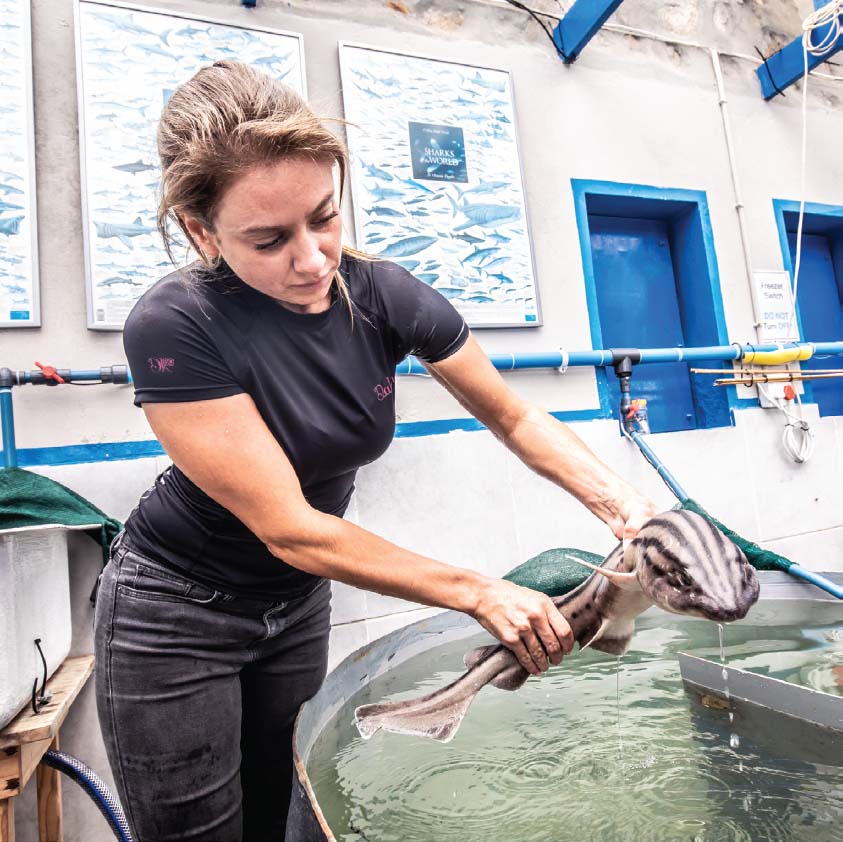
A scientist at the South Africa Shark Conservancy in Hermanus, South Africa, handles a pajama shark, a species endemic only to that country. Notice the long horizontal stripes along its body.
South Africa Shark Conservancy
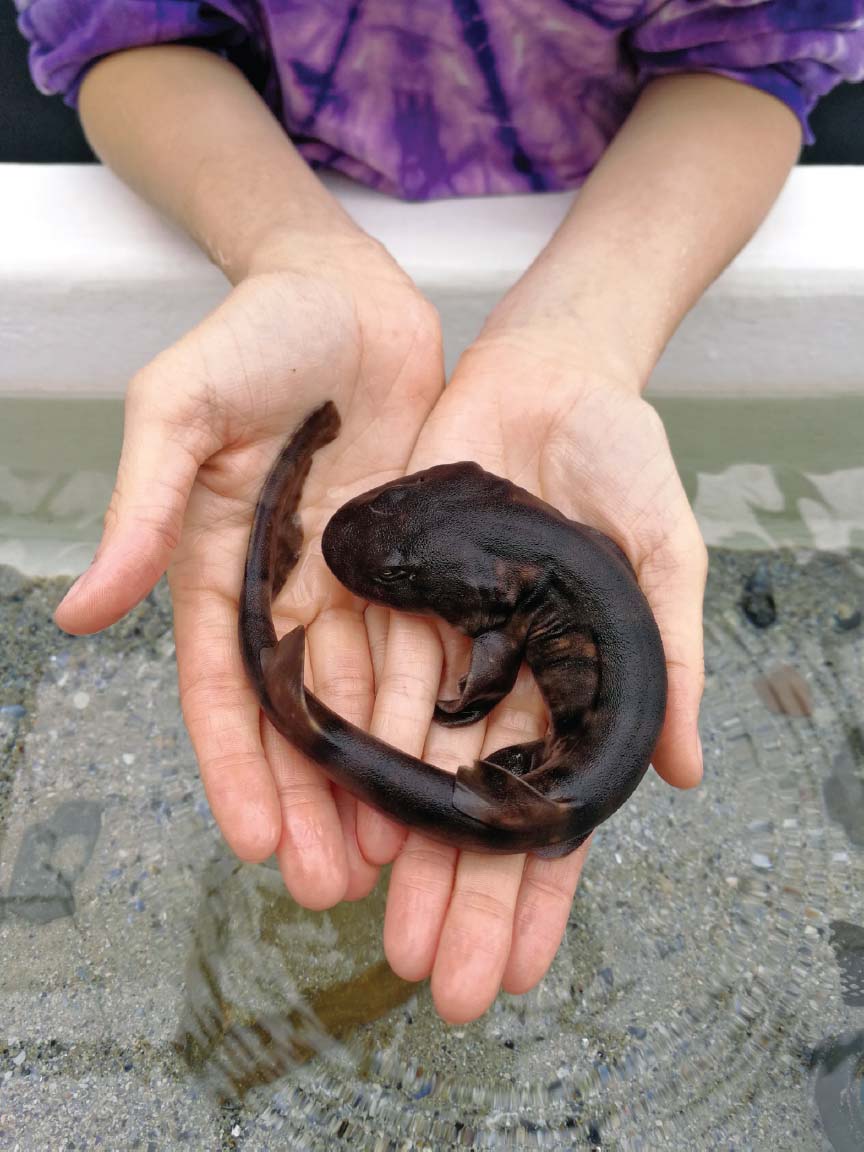
Some sharks fit easily into a human hand. This baby catshark is just beginning its life.
South Africa Shark Conservancy

Longline fishermen in the South Pacific hauling in a blue shark, the species most commonly caught by longline vessels. Because the demand for shark fins remains so high throughout Asia—China, in particular—sharks are caught and finned, then thrown back into the ocean to suffocate to death.
Greenpeace
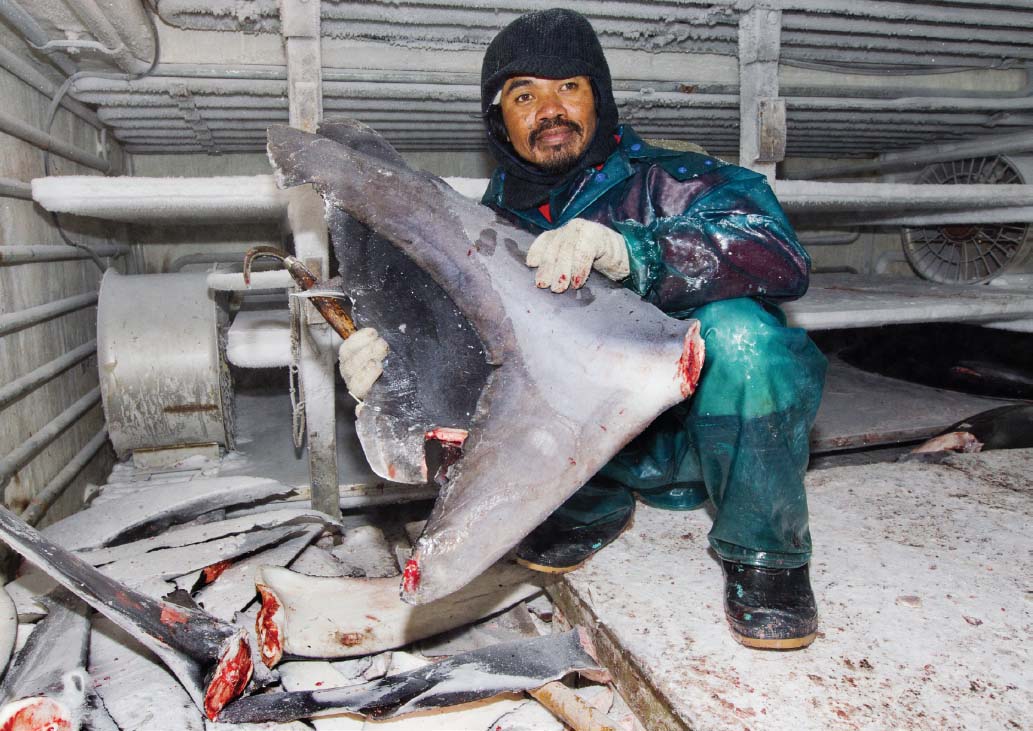
Shark fins stored in a freezer compartment. By keeping only the fins of a shark, fishermen save room on board for other fish, such as tuna. A fishing vessel’s catch is often transshipped to reefer vessels, which allows the ship, and its crew, to remain at sea for extended periods of time.
Greenpeace

Fishermen, who rely on the sale of shark fins in lieu of a regular paycheck, often work 18 to 20 hours a day. Finally allowed to sleep, they fall, exhausted, into their crowded bunks.
Greenpeace

Shark fins deposited at a port facility in Hong Kong, which serves as the main depot for more than 40 percent of the fins that end up in shark-fin soup. While consumption of shark-fin soup is falling somewhat in China, the dish is increasingly being served in other Asian countries like Vietnam, Thailand, and Indonesia.
Alex Hofford/Greenpeace
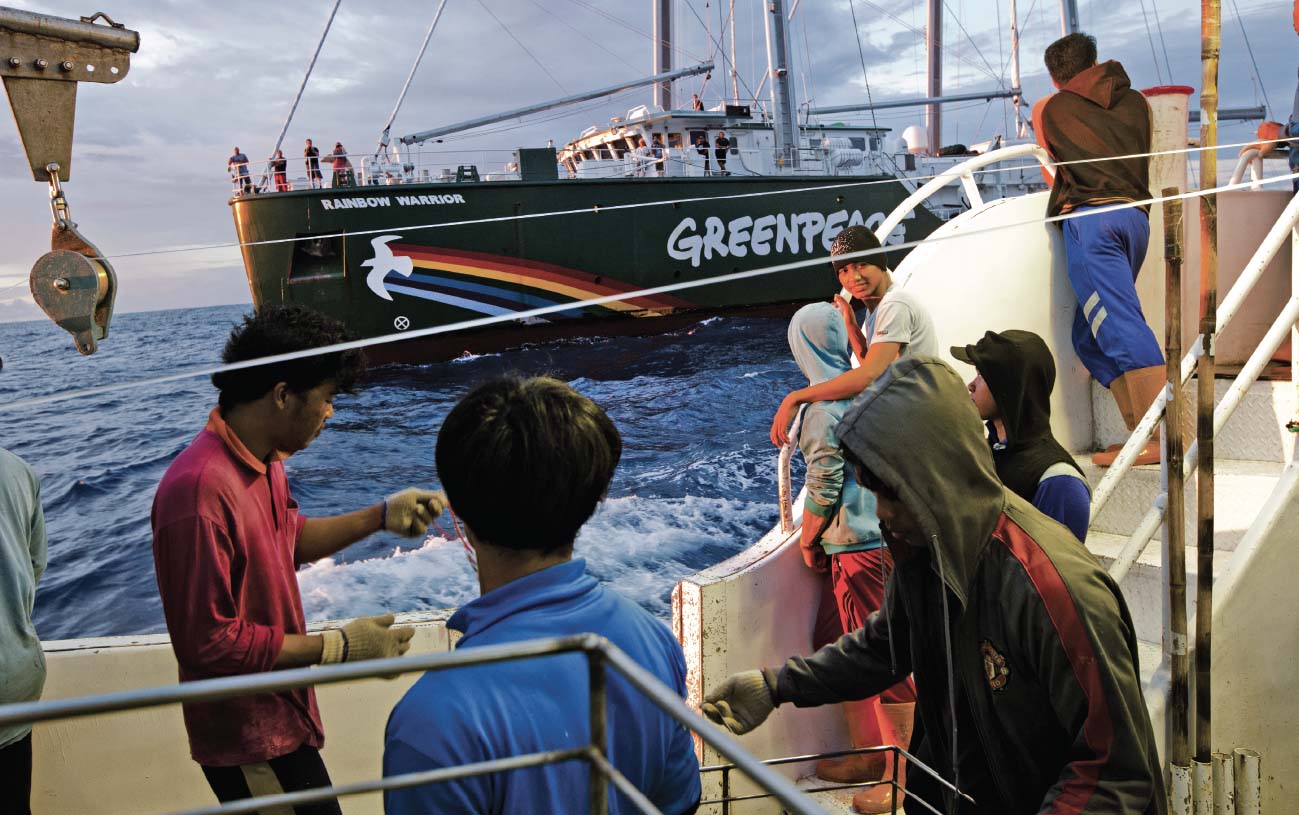
Bearing witness, Greenpeace’s iconic Rainbow Warrior inspects fishing vessels in the Pacific Ocean to make sure they are fishing legally. Illegal, unregulated, and unreported (IUU) fishing is a major challenge to sustainable fishing around the world.
Greenpeace